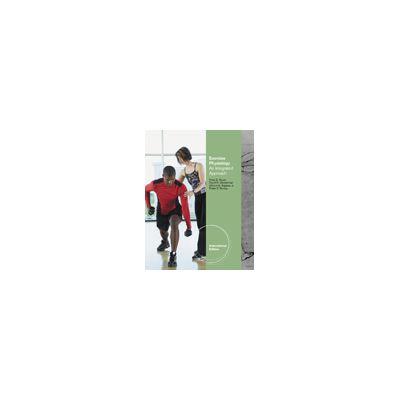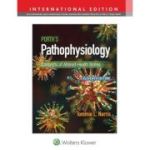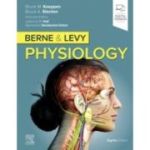Exercise Physiology An Integrated Approach

Price: 315,00 lei
Availability: in supplier's stock
Author: Peter B. Raven, David H. Wasserman, William G. Squires, Tinker D. Murray
ISBN: 9780538735469
Publisher: Cengage Learning
Publishing Year: 2013
Edition: 1
Pages: 592
Category: PHYSIOLOGY & PATHOPHYSIOLOGY
DESCRIPTION
EXERCISE PHYSIOLOGY, International Edition presents the fundamental concepts of exercise physiology. Students learn the immediate and long-term effects of exercise on physiological systems in the context of the most recent research, including molecular and genetics studies. The text focuses on issues like obesity, diabetes, and metabolic syndrome, and is designed to address the global pandemic of sedentary diseases in all age groups. The examples in the text are integrated throughout and link the principles of exercise physiology to strategies that students can use to apply the science in real-life client situations.
Features
CONCEPTS AND APPLICATIONS: Student learn how the body adapts to exercise and how to apply these principles to make a more global impact--from improving physical fitness and managing disease to training for peak performance and developing effective rehabilitation programs for future clients.
FOCUSED LEARNING: Preparing a wide range of students, the "Warm Up" pre-test questions help students determine their current knowledge and review needs. The "Quick Start" questions then help students think about how they can use information in the chapter with clients.
REAL WORLD EXAMPLES: "In Practice" examples provide students with perspectives related to health/fitness, athletic performance, and rehabilitation. Students also learn from "In the Spotlight" biographies of experts in each chapter topic and "In Retrospect" examples of classical exercise physiology experiments that were used to investigate the topics.
CRITICAL THINKING: "Concepts, Challenges & Controversies" provide students with more in depth information about exercise physiology topics that seem to be "ever changing."Parenthetical Questions throughout each chapter challenge students to read or re-read pertinent portions of the text enabling them to interpret the text and answer the question.
END OF CHAPTER REINFORCMENT: The End of chapter support includes a bulleted Chapter Summary, "Terms to Know" with page references, Study Questions, Exercise Physiology Web Links, Selected References, and Exercise Physiology Reality – interactive labs that reinforce concepts presented in each chapter.
1. Epidemiology, Physical Activity, Exercise and Health.
2. Basic Training Principles for Exercise.
3. Neuromuscular Responses and Adaptations to Exercise.
4. Basics of Exercise Metabolism.
5. Fuel Utilization During Exercise.
6. Hormonal Regulation of Metabolism During Exercise.
6A. Exercise, Obesity, and Metabolic Syndrome.
6B. Exercise and Diabetes Mellitus.
7. The Cardiovascular System and Exercise.
8. Cardiovascular Adaptations to an Exercise Program.
9. The Respiratory System and Exercise.
10. Measurement of Common Anaerobic Abilities and Cardiorespiratory Responses Related to Exercise.
11. Basics of Nutrition for Exercise.
12. Nutritional Strategies and Ergogenic Aids to Enhance Exercise.
13. Body Composition and Weight Management.
14. Adaptations to Environmental Extremes: Heat, Cold, Altitude, Pollution.
Appendix. Training Program Examples.
Features
CONCEPTS AND APPLICATIONS: Student learn how the body adapts to exercise and how to apply these principles to make a more global impact--from improving physical fitness and managing disease to training for peak performance and developing effective rehabilitation programs for future clients.
FOCUSED LEARNING: Preparing a wide range of students, the "Warm Up" pre-test questions help students determine their current knowledge and review needs. The "Quick Start" questions then help students think about how they can use information in the chapter with clients.
REAL WORLD EXAMPLES: "In Practice" examples provide students with perspectives related to health/fitness, athletic performance, and rehabilitation. Students also learn from "In the Spotlight" biographies of experts in each chapter topic and "In Retrospect" examples of classical exercise physiology experiments that were used to investigate the topics.
CRITICAL THINKING: "Concepts, Challenges & Controversies" provide students with more in depth information about exercise physiology topics that seem to be "ever changing."Parenthetical Questions throughout each chapter challenge students to read or re-read pertinent portions of the text enabling them to interpret the text and answer the question.
END OF CHAPTER REINFORCMENT: The End of chapter support includes a bulleted Chapter Summary, "Terms to Know" with page references, Study Questions, Exercise Physiology Web Links, Selected References, and Exercise Physiology Reality – interactive labs that reinforce concepts presented in each chapter.
1. Epidemiology, Physical Activity, Exercise and Health.
2. Basic Training Principles for Exercise.
3. Neuromuscular Responses and Adaptations to Exercise.
4. Basics of Exercise Metabolism.
5. Fuel Utilization During Exercise.
6. Hormonal Regulation of Metabolism During Exercise.
6A. Exercise, Obesity, and Metabolic Syndrome.
6B. Exercise and Diabetes Mellitus.
7. The Cardiovascular System and Exercise.
8. Cardiovascular Adaptations to an Exercise Program.
9. The Respiratory System and Exercise.
10. Measurement of Common Anaerobic Abilities and Cardiorespiratory Responses Related to Exercise.
11. Basics of Nutrition for Exercise.
12. Nutritional Strategies and Ergogenic Aids to Enhance Exercise.
13. Body Composition and Weight Management.
14. Adaptations to Environmental Extremes: Heat, Cold, Altitude, Pollution.
Appendix. Training Program Examples.
Book categories
-Special order
-Publishers
-Promo
-Callisto Publications
-New books
-- 294,00 lei
- 453,60 leiMRP: 504,00 lei
- 315,00 lei
Promotions
-- 453,60 leiMRP: 504,00 lei
- 441,00 leiMRP: 514,50 lei
- 567,00 leiMRP: 630,00 lei











OUR VISITORS OPINIONS